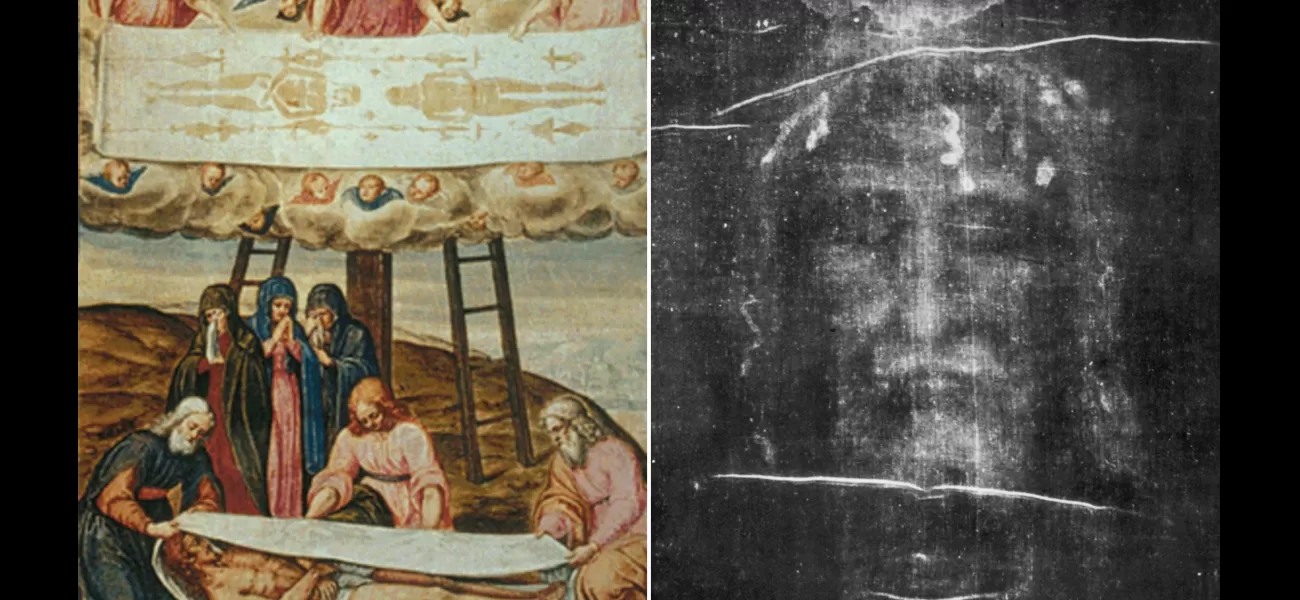Researchers studying the cloth believed to have wrapped Jesus' body discover major advancement.
Linen cloth believed to be Jesus' burial cloth, with faint image of bearded man.
August 20th 2024.

Throughout history, the Shroud of Turin has been a topic of controversy and debate. This linen cloth is said to hold the imprint of Jesus's body after his crucifixion, with a faint image of a bearded man appearing on both the front and back. While many believers see this as evidence of the cloth's authenticity, skeptics have questioned its legitimacy since it was first displayed in the 14th century.
In the 1980s, scientific analysis seemed to disprove the idea that the Shroud of Turin was actually used to cover Jesus's body. Carbon dating placed the fabric's origins between 1260 and 1390 AD, hundreds of years after Christ's death. However, a recent breakthrough has shed new light on the matter.
Italian researchers from the Institute of Crystallography of the National Research Council have utilized a new technique involving x-rays to date the material. Through wide-angle x-ray scattering, they were able to measure the natural aging of flax cellulose and determine that the cloth was manufactured approximately 2,000 years ago, around the time of Jesus's life and death.
The Shroud of Turin has been a source of fascination for centuries, often being displayed behind glass and depicted in historical artwork. The image on the cloth is said to be that of Jesus's face, with faint bloodstains and markings that correspond with biblical descriptions of his crucifixion wounds.
According to the Bible, Joseph of Arimathea wrapped Jesus's body in a linen shroud and placed him in a tomb, rolling a large stone to cover the entrance. Since 1578, the Shroud has been preserved in the royal chapel of the cathedral of San Giovanni Battista in Turin, Italy.
The recent study, published in the journal Heritage, compared the findings to other linens found in Israel dating back to the first century. The results were found to be fully compatible, providing further evidence for the Shroud's authenticity.
Lead author Dr. Liberato De Caro stated that the 1988 carbon dating test should be considered incorrect due to the possibility of contamination on the fabric samples. He explains that if the cleaning procedure is not thorough, carbon dating cannot be reliable. This was likely the case in 1988, as evidence shows an increase in carbon-14 from the periphery to the center of the sheet.
In conclusion, the new findings add credibility to the theory that the Shroud of Turin is indeed the cloth that Jesus was buried in after his death. With its faint image of a bearded man and markings that match biblical descriptions, this linen cloth continues to captivate and intrigue people around the world.
In the 1980s, scientific analysis seemed to disprove the idea that the Shroud of Turin was actually used to cover Jesus's body. Carbon dating placed the fabric's origins between 1260 and 1390 AD, hundreds of years after Christ's death. However, a recent breakthrough has shed new light on the matter.
Italian researchers from the Institute of Crystallography of the National Research Council have utilized a new technique involving x-rays to date the material. Through wide-angle x-ray scattering, they were able to measure the natural aging of flax cellulose and determine that the cloth was manufactured approximately 2,000 years ago, around the time of Jesus's life and death.
The Shroud of Turin has been a source of fascination for centuries, often being displayed behind glass and depicted in historical artwork. The image on the cloth is said to be that of Jesus's face, with faint bloodstains and markings that correspond with biblical descriptions of his crucifixion wounds.
According to the Bible, Joseph of Arimathea wrapped Jesus's body in a linen shroud and placed him in a tomb, rolling a large stone to cover the entrance. Since 1578, the Shroud has been preserved in the royal chapel of the cathedral of San Giovanni Battista in Turin, Italy.
The recent study, published in the journal Heritage, compared the findings to other linens found in Israel dating back to the first century. The results were found to be fully compatible, providing further evidence for the Shroud's authenticity.
Lead author Dr. Liberato De Caro stated that the 1988 carbon dating test should be considered incorrect due to the possibility of contamination on the fabric samples. He explains that if the cleaning procedure is not thorough, carbon dating cannot be reliable. This was likely the case in 1988, as evidence shows an increase in carbon-14 from the periphery to the center of the sheet.
In conclusion, the new findings add credibility to the theory that the Shroud of Turin is indeed the cloth that Jesus was buried in after his death. With its faint image of a bearded man and markings that match biblical descriptions, this linen cloth continues to captivate and intrigue people around the world.
[This article has been trending online recently and has been generated with AI. Your feed is customized.]
[Generative AI is experimental.]
0
0
Submit Comment





